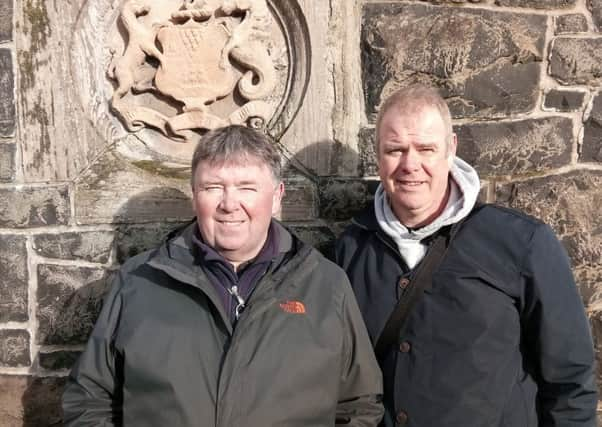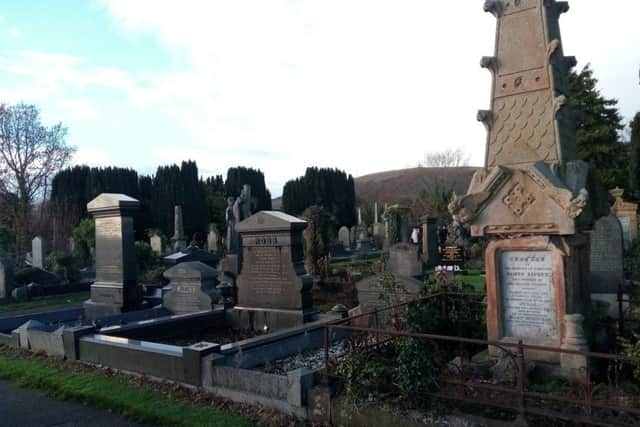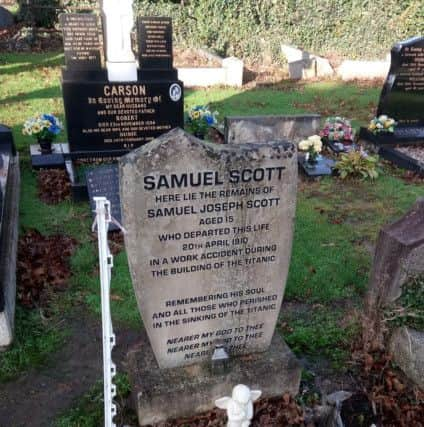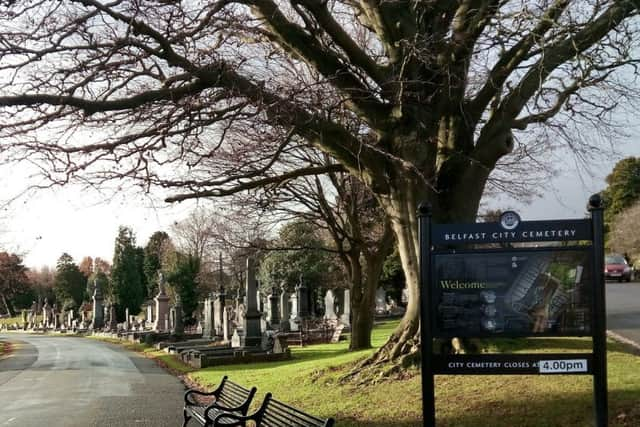Belfast cemetery tours bid to stop blight of vandalism


The News Letter was invited along to one of the free tours at Belfast City Cemetery which proved to be a fascinating insight into life and death in Belfast led by Dara Barrett and Aidan Crean.
Cemetery administrator Mr Barrett, who has a background as a tour bus guide, described the cemetery which is located between the Falls Road and Springfield Road as “a microcosm of Belfast life”.
Advertisement
Hide AdAdvertisement
Hide AdHe said: “Over 230,000 people are interred here including industrialists, pioneers of education, suffragettes, men and women from both world wars, victims of our turbulent past, victims of the Titanic as well as the ordinary folk of Belfast.


“The cemetery reveals much about our social history, its citizens, the families that built Belfast. It also captures the complexity and the diversity of our society.”
Wildlife expert Mr Crean explained why the recent guided tours of the cemetery had been taking place: “We’re here in response to the antisocial behaviour. We hope that by talking to schools and engaging with the kids who are gathering here and at Milltown Cemetery on Friday and Saturday nights we can go some way to tackling the problem.”
Mr Barrett added: “Belfast City Council are trying to be very proactive about this.
“What is happening right now is an absolute disgrace.”


Advertisement
Hide AdAdvertisement
Hide AdArson attacks and the desecration of graves at Belfast City Cemetery and nearby Milltown featured prominently in the news over the summer, prompting Belfast City Council to launch an education drive.
Mr Crean said: “The talks in schools have gone down well and so have the tours. We’re trying to link up nature conservation with learning about the history of the cemetery and making it a safe and enjoyable space.”
On the tour of Belfast City Cemetery Mr Barrett was a fountain of knowledge on the ‘residents’ and was also able to give an engaging overview of the city’s history.
With Belfast’s cemeteries like Friar’s Bush and Clifton Street becoming overcrowded in the mid 1800s there was a lot of pressure on the council to open up a new burial ground for all denominations.


Advertisement
Hide AdAdvertisement
Hide AdBelfast City Cemetery opened on August 1, 1869, designed by William Gay in the shape of a bell with reference to the Bel in Belfast.
It includes a Jewish section and a poor ground containing around 80,000 people buried in a large unmarked plot.
The cemetery has 26 miles of pathways which climb over 200 feet, overlooked by Black Mountain.
Mr Crean spoke of the cemeteries’ flora and fauna and chipped in with some colourful tales such as the story of the two Belfast boys who got swept out from the Bog Meadows into Belfast harbour in a metal bathtub.


Advertisement
Hide AdAdvertisement
Hide AdHe said: “These tubs were a source of great pride, so much so that when the boys were returned safe and well to their mother after a six-hour search, the first thing she asked about was the tub.”
Asked how much research was necessary to lead a tour of the cemetery, Mr Barrett said: “At Roselawn there are 18 cremations a day, here we have 150 burials a year so we’ve a lot more time on our hands. Plus I’m very interested in the history of Belfast.”
• The next tour led by the pair will be at Milltown Cemetery on January 7 at 10.30am
• For more details email [email protected] or call 07871756287
Advertisement
Hide AdAdvertisement
Hide AdSome of those people with a story to tell buried in Belfast City Cemetery include:
Edward Harland: The H in Belfast’s famous H&W, he was born in Scarborough before moving to Belfast where he formed a shipbuilding business with Gustav Wilhelm Wolff.


Margaret Byers: A pioneer of women’s education in Belfast and principal of Victoria College.
Richard Rutledge Kane: A CoI minister in the 1860s who played a leading role in the Orange Institution. He is also said to have been an Irish language enthusiast. He is described on his headstone as, amongst other things, ‘a loyal Irish Patriot’.
Advertisement
Hide AdAdvertisement
Hide AdThomas Gallaher: Founder of Gallaher tobacco group, one of the largest in the world. He was born in Londonderry but moved to Belfast in 1863 where he opened a large factory on York Street.
Gertrude Annie Taylor: A staff nurse with the Voluntary Aid Detachment, who died of pneumonia on active service in December 1916 aged 37. She had seen front line action in WWI as an auxiliary nurse.
Samuel Scott: A tragic 15-year-old from east Belfast who is said to be Titanic’s first victim. A riveter, he died when he fell from a ladder while working on the ship in 1910.
John (Jack) Peden: A Belfast-born winger who became the first Irish player to play for Manchester United (then Newton Heath) in 1893.
Elisha Scott: The former manager of Belfast Celtic who made 468 appearances as goalkeeper for Liverpool FC from 1912 to 1934.